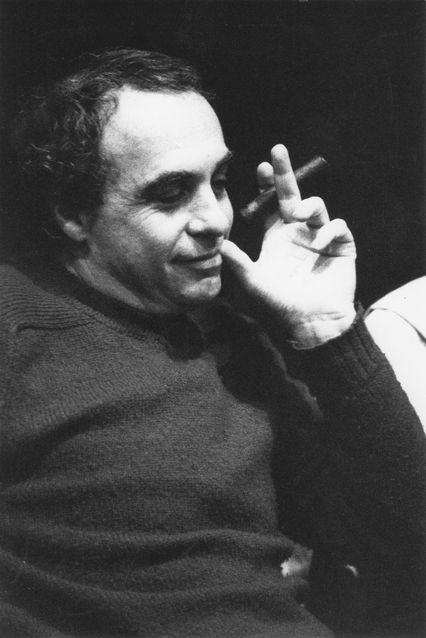The last Bel Air film, it was shot in Brazil but the soundtrack and editing was done in the …clair studios in Paris, after Bressane was forced to leave Brazil by the military dictatorship. Long sequences that follow a maid who knifes her mistresses to death as she goes from house to house. "This is a very strong film, Maria Gladys and Helena Ignez are wonderful, it is a sort of more intimate Matou a Família, as though it were a Super 8. At the time, the film had the effect of a knife blade. The theme is the slaves' revolt, the downtrodden who, since they don't have any prospects, decide to transform ten, twenty days into an eternity. And so they kill their masters. They end up dying, but that moment of liberty, even if it was just one week, for them was an eternity. The color was very important, it's like a Super 8 Polaroid, but made with sophisticated technology, …clair 16 mm, Nagra…" (J. Bressane).
Biography
film director

Julio Bressane
Julio Bressane was born in Rio de Janeiro in 1946. As an adolescent, he frequented the haunts of the nascent Cinema Novo, establishing ties with Paulo Cezar Saraceni, Glauber Rocha and Leon Hirszman. At 19 years of age, he was assistant to Walter Lima Jr. for the film Menino de Engheno and then later to Fernando Campos for A Viagem. He debuted as a director in 1965 with the short film Lima Barreto: Trajetória. O Anjo Naceu and Matou a Familia e foi ao Cinema are received as a break with Cinema Novo. Cinema Marginal or "udigrudi". The term was never recognized by his esponents. In 1970, with Rogerìo Sganzerla and Helena Ignez, he founds the production house Belair, whose activity is brusquely interrupted by the military dictatorship, which forces the three founders into exile. Bressane lives a few years abroad, mainly in London and New York, he travels to Morocco and in Asia until 1973, when he returns to Brazil. Over the past few years, after a long period of ostracism by international festivals, his films have been presented with growing success in Taormina, Venice, Turin and Rotterdam. In 2002, the Torino Film Festival presented a complete retrospective of the Brazilian director.
FILMOGRAFIA
Lima Barreto: Trajetória (1965-1966), Bethânia Bem de Perto (1966), Elis Regina (1966, film perduto), Cara a Cara (1967), O Anjo Nasceu (1969), Matou a Família e Foi ao Cinema (1969), Barão Olavo, o Horrível (1970), A Miss e o Dinosauro (1970, film perduto), Cuidado Madame (1970), Memórias de um Estrangulador de Louras/Memories of a Blonde Strangler (1971), Amor Louco/Crazy Love (1971), A Fada do Oriente (1972, film perduto), Lágrima Pantera (1972, film perduto), O Rei do Baralho (1973); Viagem Através do Brasil I (1973-1974), Viagem Através do Brasil II (1973-1974), Viagem Através do Brasil III (1973-1974-1975), O Monstro Caraíba - Nova História Antiga do Brasil (1975), Viola Chinesa - Meu Encontro com o Cinema Brasileiro (1975), A Agonia (1976), O Gigante da América (1976), Cidade Pagã (1979), Cinema inocente (1980), Tabu (1982), Brás Cubas (1985), Sob o Céu, Sob o Sol, Salvador (1987), Sermões - A História de António Vieira (1989), Quem seria o Feliz Conviva de Isadora Duncan? (1992), Galáxia Albina (1992), Infernalário: Logodédalo - Galaxia Dark (1993), O Cinema do Cinema - Criação e Recriação da Imagem no Filme Cinematográfico (1993), Antonioni - Hitchcock: A Imagen em Fuga (1993), As Canções que Vôce fez pra Mim (1994), O Mandarim (1995), Miramar (1997), São Jerônimo (1998), Dias de Nietzsche em Turim (2001), Nietszche in Nice, Filme de Amor (2003).
Cast
& Credits
Director of photography: José Antonio Ventura, Edson Santos.
Director assistant: Guará (Guaracy Rodrigues).
Sound: José Antonio Ventura.
Cast: Helena Ignez, Maria Gladys, Suzana de Moraes, Renata Sorrah.
Production company: Julio Bressane, Rogério Sganzerla per Belair Filmes.
